NOT YET OUT OF THE PUMPKIN PATCH
Today’s plans for Tomorrow’s Pumpkins
My friend Jack is already planning for next Halloween, not getting together next year’s costume, but squirreling away seeds for growing next year’s pumpkins. Jack wants good yields and he wants large pumpkins. Seeds that he bought this past spring for giant pumpkins didn’t produce any fruits. But a plant growing out of his compost pile — a “volunteer” plant — did produce a few good-sized fruits.
Jack’s question to me was whether the seeds he has saved from this productive volunteer will produce good pumpkins. My answer was, “It depends.”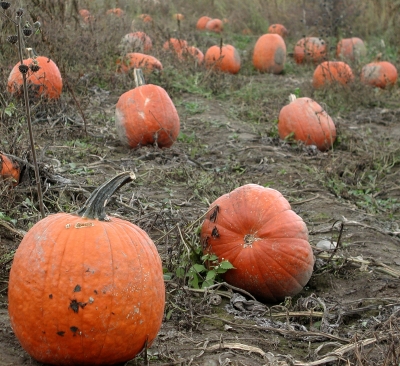
First of all, it depends on what seed gave rise to that volunteer plant. Of course it was from a pumpkin. But did that pumpkin grow from a hybrid seed?
Hybrid seed is produced by deliberately crossing one plant having certain desirable traits with another plant having another set of desirable traits. Seeds from that deliberate cross grow into plants that combine the qualities of both parents.
But these qualities are not perpetuated in the seeds from the fruit of a plant grown from hybrid seed. (Yes, I wrote that correctly.) Jumbling around of chromosomes in the next generation results in seeds that grow into different, and probably less desirable, plants.
What Made those Pumpkin Seeds
Jack must hope that his volunteer pumpkin grew from “open-pollinated” seeds. Open-pollinated seeds are produced when a plant pollinates itself. If this self-pollination has been going on for years, with seed being saved and planted each year, the offspring become predictably uniform within a batch of seeds and from year to year. The result is an “open-pollinated variety” such as the old ‘Small Sugar’ and ‘Connecticut Field’ pumpkins.
Until Jack’s seeds grow into plants next year, there’s no way to know if the plants were from hybrid or open-pollinated seed. My hunch is that this year’s plant grew from open-pollinated seed, probably from an old pumpkin that made its way into the compost pile last year. If that pumpkin had been the result of hybrid seed, this year’s vines, one generation removed from the hybrid, would have made a poor showing.
One more wrinkle figures into this pumpkin saga: Even if Jack’s volunteer pumpkin grew from an open-pollinated seed, the value of this year’s seeds for next year’s Halloween pumpkins also depends on what was growing nearby. If a different variety of pumpkin was growing nearby, a bee might have carried pollen from its male flowers over to female flowers on the desirable volunteer, messing things up genetically. (The fruit would be unaffected, but the seed would carry genes of both the male and female parents.)
Perhaps Unpredictable, Yet Interesting
Jack is not yet home free even if he assumes that his volunteer grew from an open-pollinated seed and was isolated from other pumpkins. We might call any orange, round, ribbed, squashy thing a “pumpkin,” but botanically, pumpkin usually represents any of three different species of Cucurbita. Besides pumpkin, one of the species also includes buttercup squashes; the second species also includes butternut squashes; and within the third species, acorn squash and summer squashes are lumped together with pumpkin. If any of these other plants was growing nearby and happened to be the same species as Jack’s volunteer pumpkin, the potential for cross-pollination existed.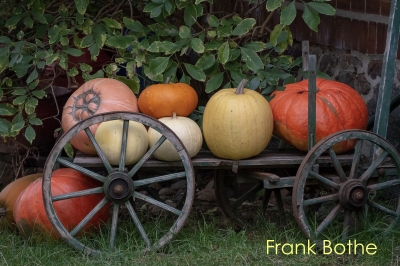
To maintain purity in open-pollinated pumpkin seeds, female flowers must be isolated 500 feet from potential suitors, or else have their blossoms hand-pollinated, then taped closed. From all this, you can understand what keeps seed companies in business. Rather than produce your own seed, it is a whole lot simpler to just buy a packet of pumpkin seeds from a reputable source.
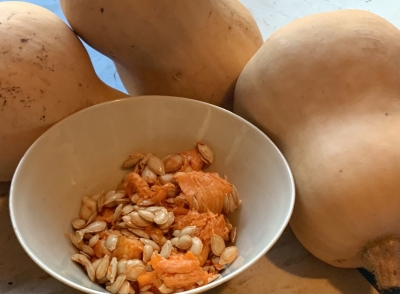
“Pumpkin” seeds
On the other hand, how interesting it would be to see what kind of plants those seeds from the volunteer produce. And how rewarding it would be if they develop into plants that produce many and large pumpkins. Keep those seeds cool and dry until spring, Jack.
(For more about science-y stuff that can be put to good use out in the garden, see my book The Ever Curious Gardener: Using a Little Natural Science for a Much Better Garden.)
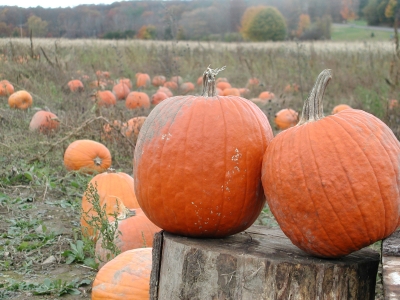


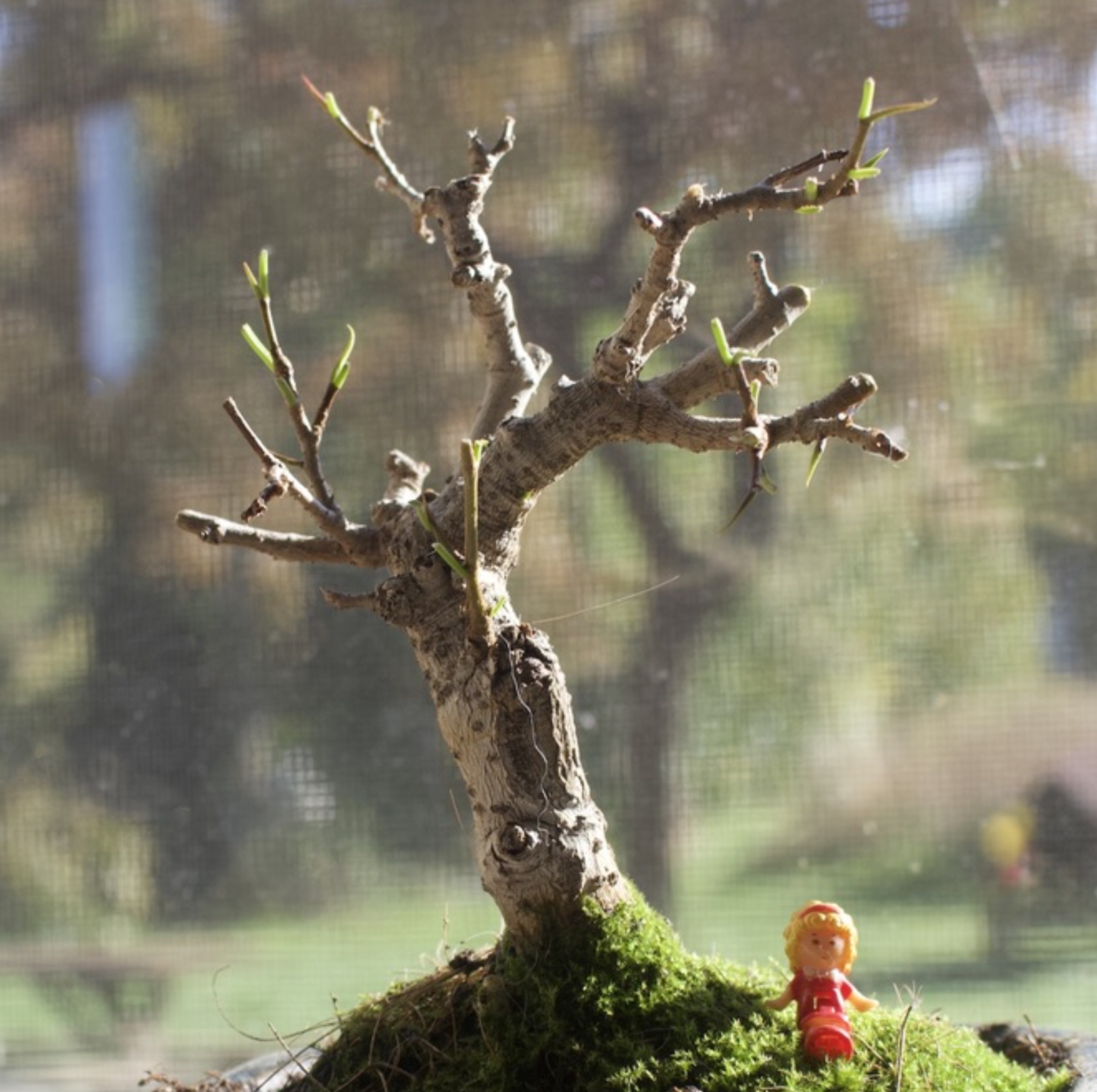
That was really helpful. And I wish I had known it before I went to all the trouble to save seeds from a number of squashes and pumpkins all of whom grew close to each other. Oh well. I’ll know better next year. Thank you
I often have volunteer squashes growing out of compost piles and those typically out produce the plants grown in the field rows. I always love to see what develops from these plants; the fruits are often very good and sometimes not so great. Fruits from not so great squash make excellent chicken feed and all the squashes contain seeds that are delicious when roasted.
Not surprising that they grow so well in the compost: good aeration, lots of nutrients, good moisture.
Very interesting article. I have a somewhat related question regarding seedlings, or berry bushes, in nursery pots, until they can be planted. Do you have to remove any, so-called weeds, from the nursery pots? These so-called weeds might actually be beneficial for the soil in the nursery pots, because their roots feed the soil bacteria. I am only aware of Elderberry cuttings which need to be kept weed free once planted. Is this also the case for all other seedlings, in nursery pots, or after planting? Thank you.
Those weeds might be beneficial. Then again, they might not. I would remove them.